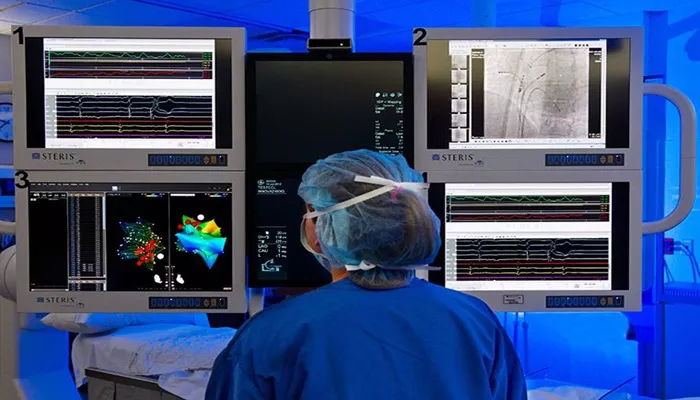Electrophysiologists are specialized cardiologists who focus on diagnosing and treating heart rhythm disorders, known as arrhythmias. To accurately diagnose these conditions, a range of diagnostic tests are employed. This article provides a comprehensive overview of the various tests used by electrophysiologists to diagnose arrhythmias, outlining each method’s purpose, procedure, and significance.
What Tests Do Electrophysiologists Use to Diagnose Arrhythmia
1. Electrocardiogram (ECG or EKG)
An electrocardiogram (ECG or EKG) is a fundamental tool used in diagnosing arrhythmias. It records the electrical activity of the heart over time through electrodes placed on the skin.
Purpose:
The ECG helps identify abnormal heart rhythms, detect heart attacks, and monitor heart conditions. It provides a detailed graphical representation of the heart’s electrical impulses, which can reveal irregularities in heartbeats.
Procedure:
During an ECG, electrodes are attached to the chest, arms, and legs. The patient may need to remain still for a few minutes while the ECG machine records the heart’s electrical signals.
Significance:
The ECG is crucial for diagnosing a wide range of arrhythmias, including atrial fibrillation, ventricular tachycardia, and premature ventricular contractions. It is often the first test performed when an arrhythmia is suspected.
2. Holter Monitor
A Holter monitor is a portable ECG device worn by the patient for an extended period, typically 24 to 48 hours.
Purpose:
This test is used to capture intermittent arrhythmias that may not be detected during a standard ECG. It provides a continuous recording of the heart’s electrical activity throughout the day and night.
see also: Why Does Hyperkalemia Cause Arrhythmia?
Procedure:
The Holter monitor is attached to the patient with electrodes and worn on a belt or harness. The patient is asked to go about their normal daily activities while the device records data.
Significance:
Holter monitoring is particularly useful for diagnosing arrhythmias that occur sporadically or in response to specific triggers. It allows for a more comprehensive assessment of the heart’s rhythm over an extended period.
3. Event Monitor
An event monitor is similar to a Holter monitor but is designed for longer-term monitoring, often several weeks.
Purpose:
It is used to detect infrequent arrhythmias that may not appear during shorter monitoring periods. The device can be activated by the patient when they experience symptoms, such as palpitations or dizziness.
Procedure:
The event monitor is worn continuously, and the patient can press a button to record their heart rhythm when symptoms occur. This recorded data is then analyzed by the electrophysiologist.
Significance:
Event monitors are beneficial for capturing arrhythmias that happen less frequently and for correlating symptoms with specific heart rhythms.
4. Electrophysiological Study (EPS)
An electrophysiological study (EPS) is an invasive procedure used to investigate the heart’s electrical system.
Purpose:
EPS helps to pinpoint the source of arrhythmias, assess the heart’s electrical pathways, and determine the best treatment approach. It is often used when other diagnostic tests are inconclusive.
Procedure:
During an EPS, catheters are inserted into the heart through blood vessels in the groin or neck. These catheters are equipped with electrodes that record electrical signals and can induce arrhythmias to study their behavior.
Significance:
EPS is a critical tool for diagnosing complex arrhythmias and for planning catheter ablation procedures. It provides detailed information about the heart’s electrical conduction system and helps guide treatment decisions.
5. Stress Test
A stress test, or exercise test, evaluates how the heart responds to physical exertion.
Purpose:
It helps identify arrhythmias that occur during physical activity or stress. The test can reveal how well the heart handles increased workload and stress.
Procedure:
The patient exercises on a treadmill or stationary bike while their heart rate, blood pressure, and ECG are monitored. The test continues until the patient reaches a target heart rate or experiences symptoms.
Significance:
Stress tests are useful for diagnosing exercise-induced arrhythmias and assessing overall cardiac function. They can help determine if physical activity triggers irregular heart rhythms.
6. Implantable Loop Recorder
An implantable loop recorder is a small device implanted under the skin to continuously monitor heart rhythms for an extended period.
Purpose:
It is used for long-term monitoring of patients with unexplained symptoms or infrequent arrhythmias that other tests may not capture.
Procedure:
The device is implanted just under the skin in a minor surgical procedure. It continuously records the heart’s electrical activity and can store data when triggered by symptoms.
Significance:
The implantable loop recorder provides long-term data on heart rhythms and is valuable for diagnosing elusive arrhythmias or correlating symptoms with heart activity.
Tilt Table Test
A tilt table test evaluates how changes in position affect heart rhythm and blood pressure.
Purpose:
It is used to diagnose conditions that cause fainting or dizziness due to changes in posture or autonomic nervous system dysfunction.
Procedure:
The patient is strapped to a table that tilts them from a lying to a standing position. Heart rate, blood pressure, and ECG are monitored throughout the test.
Significance:
This test helps identify arrhythmias or autonomic dysfunction that may be related to changes in posture. It is particularly useful for diagnosing syncope (fainting) episodes.
Conclusion
Diagnosing arrhythmias involves a range of tests, each with its specific purpose and significance. From basic ECGs to advanced electrophysiological studies, these diagnostic tools enable electrophysiologists to accurately identify and manage heart rhythm disorders. Understanding the role and function of each test helps in the effective diagnosis and treatment of arrhythmias, ultimately contributing to better patient outcomes.


